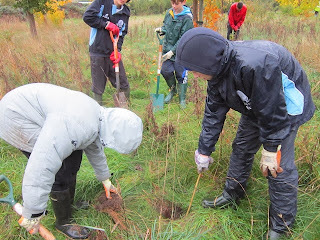London used to be covered in vast areas of heathland. These places remained open as a result of grazing by livestock, and supported a diverse mix of plant and animal species, including reptiles, such as the adder. However, 80 per cent of lowland heath has been lost, much of it in the last 50 years.
Hounslow Heath is a remnant of the Forest of Staines and used to cover over 4,000 acres, including the area which is now occupied by Heathrow Airport. Hounslow Heath was formerly a hunting ground for Henry VIII, a military encampment occupied by 20,000 of Oliver Cromwell's troops during the English Civil War, and was known as one of the most dangerous places for travellers in Britain as a result of several notorious highwaymen and women, such as Claude Duval and Moll Cutpurse. In the early 20th Century Hounslow Heath was occupied by an airfield from where the first scheduled London to Paris flights took off. Gravel extraction took place at the Heath from the mid-20th century, which was later used as a landfill site for domestic waste.
Now the Heath consists of a patchwork of habitats from restored heathland, woodland, and acid grassland.
Heathland restoration has been going on since the late 1980s, which includes the use of grazing cattle. Heathland is characterised by low-nutrient soils, however, without grazing the heathland will revert to woodland. This is where volunteers come in.
The Environment Trust again teamed up with the Hounslow Council (Carillion Services) and the Conservation Volunteers to clear away birch, gorse and bramble scrub.
Regenerating heather on Hounslow Heath.
This is one that was prepared earlier.
Volunteers remove gorse, birch and bramble scrub.
The less common dwarf gorse (Ulex minor) is also present, and was retained.
Smothered by common gorse, heather begins to die.
Steve tends the fire. Burning is the most efficient means of removing unwanted material.
Pink shows the former extent of heathland in London. The purple dots show what remains. Hounslow Heath is the small dot at the extreme left of the picture.
Sunset over Hounslow Heath.
Thursday December 19th 2013
Today the Environment Trust and TCV returned to Hounslow Heath to continue the task of restoration.
Who would guess this is in west London?
Simon warms mince pies...
...which are subjected to 'quality' testing.


















































